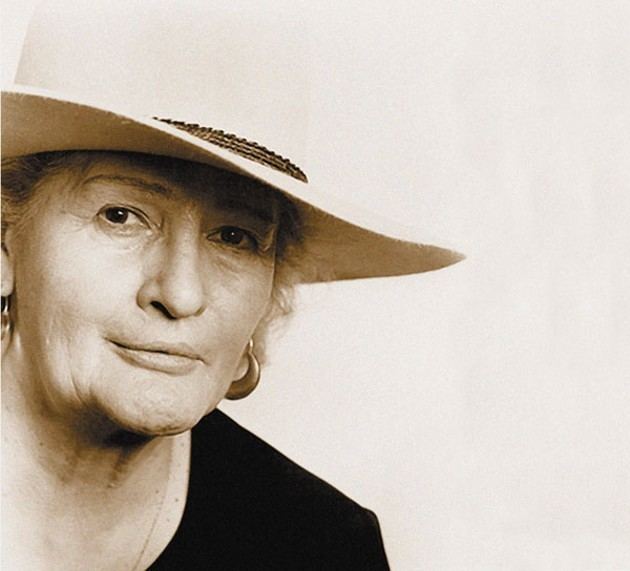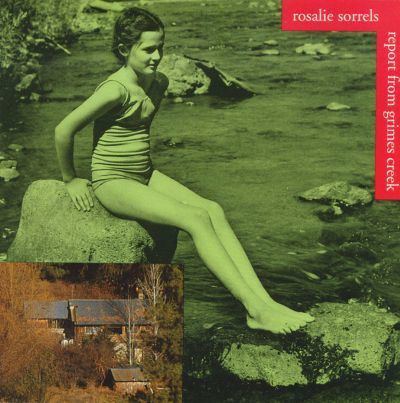Birth name Rosalie Stringfellow Website Way out in Idaho Occupation(s) Singer-songwriter Name Rosalie Sorrels | Instruments Acoustic guitar Role Singer-songwriter Years active 1950s-current Genres Folk music | |
 | ||
Labels Philo, Folkways, Paramount, Green Linnet, Red House, Way Out in Idaho Albums Strangers In Another Country, Travelin' Lady Nominations Grammy Award for Best Traditional Folk Album Similar People Utah Phillips, Ramblin' Jack Elliott, Roy Rogers | ||
Rosalie Sorrels: "Shelley's Song" and Jean Ritchie's Epitaph Song
Rosalie Sorrels (June 24, 1933 – June 11, 2017) was an American folk singer-songwriter. She began her public career as a singer and collector of traditional folksongs in the late 1950s. During the early 1960s she left her husband and began traveling and performing at music festivals and clubs throughout the United States. She and her five children traveled across the country as she worked to support her family and establish herself as a performer. Along the way she made many lifelong friends among the folk and beat scene. Her career of social activism, storytelling, teaching, learning, songwriting, collecting folk songs, performing, and recording spanned six decades.
Contents
- Rosalie Sorrels Shelleys Song and Jean Ritchies Epitaph Song
- Rosalie sorrels rock me to sleep not a singer songwriter but so much more
- Highlights
- Early life
- Married life
- Early recordings and performance career
- Song catching
- Legacy retirement and death
- Discography
- Books
- References

Rosalie sorrels rock me to sleep not a singer songwriter but so much more
Highlights

Rosalie's first major gig was at the Newport Folk Festival in 1966. Rosalie recorded more than 20 albums including the 2005 Grammy nominated album "My Last Go 'Round" (Best Traditional Folk Album.) She authored two books and wrote the introduction to her mother's book. In 1990 Sorrels was the recipient of the World Folk Music Association's Kate Wolf Award. In 1999 she received the National Storytelling Network Circle of Excellence Award for "exceptional commitment and exemplary contributions to the art of storytelling." In 2000 she was awarded an honorary Doctor of Fine Arts from the University of Idaho. In 2001 she was awarded the Boise Peace Quilt Award. She had been featured several times on National Public Radio and profiled on Idaho Public Television.

Throughout her career, she performed and recorded with other notable folk musicians, including Utah Phillips, Dave Van Ronk, Peggy Seeger and Pete Seeger. Oscar Zeta Acosta, Hunter S. Thompson and Studs Terkel wrote introductory notes for her albums. She was strongly influenced by Malvina Reynolds and went on to record several of her songs on the album What does it mean to love? She credits Reynolds with helping turn rebelliousness from a destructive force into an artistic one.
Early life

Rosalie Ann Stringfellow was born on June 24, 1933, in Boise, Idaho, to Walter Pendleton Stringfellow and Nancy Ann Kelly. Her parents met while attending Idaho State University in Pocatello. Her parents, like their parents before them, had a love of language and song which they passed to their children. Her father worked for the highway department and the family often travelled with him as he did field work.

Her cultural heritage was one of language, song, and poetry from both sets of grandparents. Her father's parents were Robert Stanton Stringfellow and Rosalie Cope who settled near Idaho City, Idaho, on the Grimes Creek property. Robert was an Episcopal missionary working with various tribes and rural churches in Idaho and Montana. His wife, Rosalie Cope, was a photographer and journalist. The Cope family were journalists in Salt Lake City. Rosalie developed a love of the outdoors while spending summers on Grimes Creek. Her mother’s parents were James Madison Kelly and Arabel Beaire who married and settled on a farm in Twin Falls, Idaho, where Rosalie was a frequent visitor.
In interviews for a biography of Rosalie, Nancy Stringfellow explained
“She finds something … in a piece of poetry … that shines out like a precious jewel, and you can see her cupping her hands and holding it. We all have a streak of that … We are delighted with words. We’re drunk with words.”
During high school Rosalie participated in theater as had her parents while in college. She acted and sang in many productions, garnering praise for her performances in the local media. It was during this period that Rosalie became pregnant and had an illegal abortion. This experience had a profound effect on her, showing up in later poetry and song. She earned a scholarship to the University of Idaho, but as a result of a rape, she became pregnant and went to a home for unwed mothers in California to await the birth of her child, a daughter. Again, the experience of making the difficult choice of adoption shows in her later writings and music.
Sorrels did not go to college as planned, but returned to Boise after the birth of her child. She acted in local theater and partied with her friends. She enjoyed the love and support of her family during this unsteady time in her life. She recounted that her parents loved her and did not judge her.
Married life
Jim Sorrels and Rosalie Stringfellow met while performing in theater in Boise, Idaho. Jim worked for the phone company as a lineman and was seven years older than Rosalie. The two married in 1952 and his job took them to Salt Lake City where they opened their home to actors, musicians, and poets living or visiting in the area. During the marriage, they had five children and the house was filled with love, laughter, music, books and words. Both loved jazz music and Rosalie joked that Jim married her to get access to her collection of jazz recordings. Over time, her interest in the folk music of her childhood was piqued and she began to study at the University of Utah with noted folklorist, Wayland Hand. She learned to accompany herself on guitar during this period and attended folklore society meetings and seminars.
Early recordings and performance career
In 1963 Rosalie began a four decade relationship with Manny Greenhill and Folklore Productions. She performed with Manny's son, Mitch at the 1966 Newport Folk Festival and produced an album in 1964 for Folk-Legacy Records entitled If I Could Be the Rain. This is her first album which included her original songs, as previous recordings contained her renditions of traditional songs she had collected. She and her children lived for a time with Lena Spencer in Saratoga Springs, New York where she performed at Caffè Lena. She continued working on her craft, and was one of the performers at the 1970 Isle of Wight Festival. Sorrels maintained an active performance schedule throughout the 1970s, 1980s and 1990s, often touring solo or with close friend Utah Phillips.
Song catching
There was a strong tradition in both the Stringfellow and Kelly families to celebrate the written and spoken word. The families encouraged reading and learning for their children and this was passed to the succeeding generations. Writing; whether sermons, magazine articles, poems or Personal journaling, were all activities Rosalie experienced in her youth. She followed in the same path of expressing herself in word by journaling and writing poetry and prose.
Songs and music were a natural extension of this interest in words and her love of music began early in life as she listened to her father, Walter Pendleton Stringfellow, sing. She had access to a scrapbook of folk songs collected by her grandmother, Rosalie Cope Stringfellow. She began her music career collecting folksongs and performing them, first with her husband Jim in the late 1950s, then later on her own. It was during this time that the Smithsonian Institution's Center for Folklife and Cultural Heritage recorded Rosalie and Jim performing her collection of traditional songs. Many of these have been released by Smithsonian Folkways Recordings in various compilation albums throughout the last fifty years.
Sorrels was a regular in the Utah folk scene in the late 1950s and early 1960s when she and her husband taught folk guitar classes at the University of Utah. She participated in workshops and folk festivals in the area, such as the Utah Folklore Workshop and Festival (1959). In this way she met other folklorists and performers at "song swaps"; as well as formal sessions. Sorrels also was a concert promoter and brought Joan Baez to Salt Lake City the first time in 1963.
Legacy, retirement and death
Rosalie Sorrels was a long established figure on the national folk singer-song writer scene. She was well known for her story telling. In its announcement of her death, the Idaho Statesman proclaimed, "The legendary folksinger also was known for her ability to spin a yarn and hold an audience in the palm of her hand." Strongly identified with her native state, she held a prominent place in Idaho cultural life.
At the midpoint of the new century's first decade, health considerations were slowing her pace. By the end of the decade, she had mostly retired to her home on Grimes Creek outside of Boise, maintaining an interest and presence in regional cultural events. Sorrels died on June 11, 2017 at a daughter's home in Reno, Nevada. The Idaho Statesman closes its announcement of Sorrel's passing with her own lyrics from My Last Go Round, a 2004 album.
When my wandering soul shall rest, and my last song gets sung, I’ll find the brightest and the best; On my way back home, all my long lost friends and lovers, once again they will be found; And I’ll kiss all their shining faces on my last go round.
Discography
The discography for Rosalie Sorrels includes albums where she is the principal performer as well as tribute albums, retrospective albums, and compilation albums for a theme of songs.
